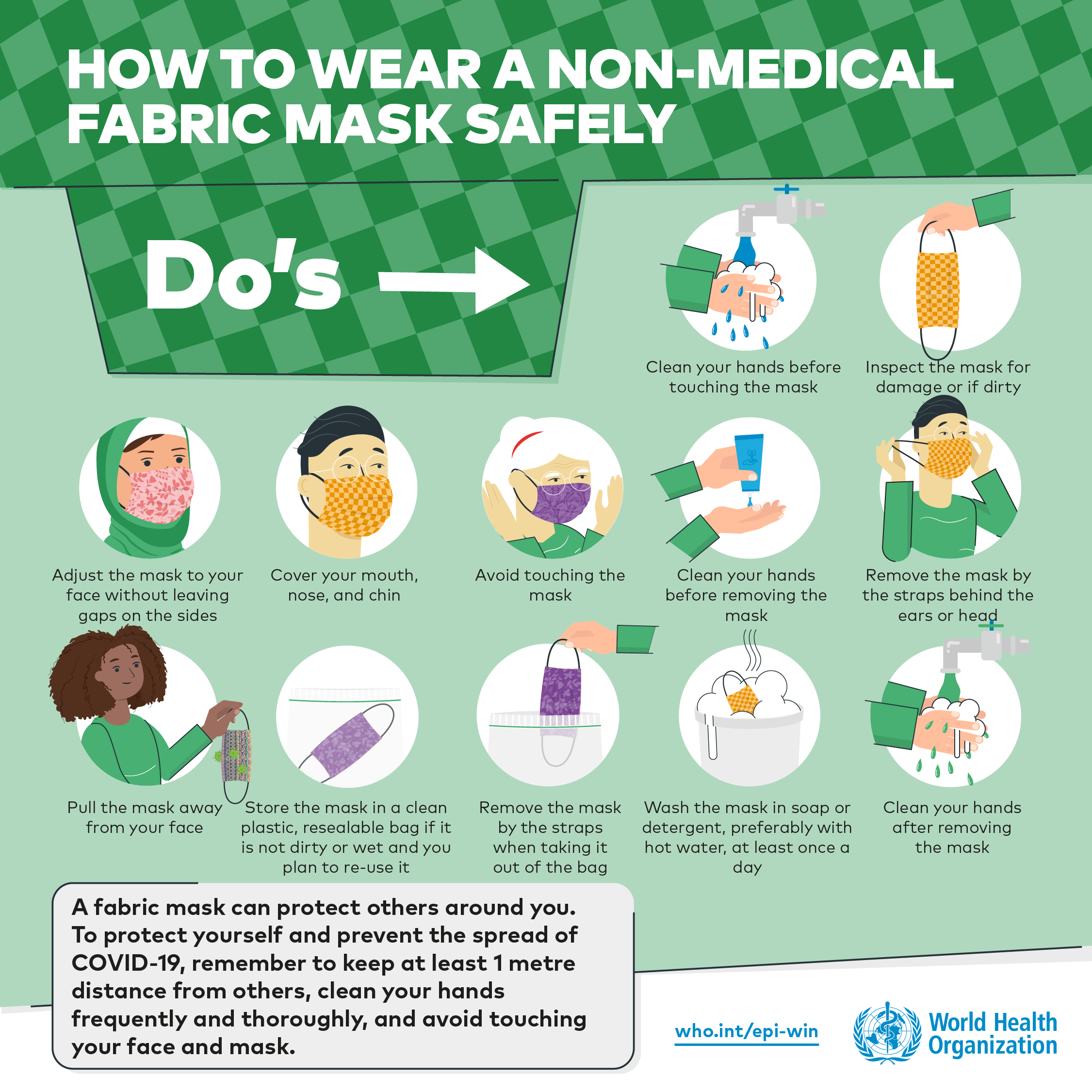
The use of masks in non-clinical settings during COVID-19. A factsheet for IAHA members
Introduction
In early June 2020, the World Health Organisation (WHO) amended their advice on the use of masks to recommended that “to prevent COVID-19 transmission effectively in areas of community transmission, governments should encourage the general public to wear masks in specific situations and settings as part of a comprehensive approach to suppress SARS-CoV-2 transmission.”1
This advice has been reflected in the actions and advice of governments here in Australia, with several jurisdictions recommending the use of masks and the mandate to wear masks in public in areas of Melbourne and the Mitchell Shire.
Why are masks recommended?
One of the main reasons to wear masks is to protect others and minimise the spread of the virus.
There is enough evidence to suggest that the virus can be spread by both pre- symptomatic and asymptomatic people (i.e. before people show symptoms and people who are positive for the virus without displaying symptoms). There are also examples where the use of masks appear to have reduced transmission.
It is important to note that, per the World Health Organisation’s advice, that the use of masks is one of a number of strategies to reduce transmission of the coronavirus.
The use of masks does not replace other precautionary measures such as good hygiene and physical distancing, and it is important that these continue to happen.
When do I use my mask?
You should firstly follow the relevant public health advice and requirements in your jurisdiction. The National Indigenous Australians Agency’s COVID-19 page provides links to each of the state and territory websites which will have the most up to date information.
It is generally recommended that the public consider the use of masks in situations and settings where physical distancing cannot be practiced (or guaranteed) such as public transport, grocery stores, at work, social gatherings, mass gatherings and closed settings, including schools.
How do I use my mask?
It is recommended, when using a reusable non-medical mask, that you:
- wash your hands before you apply the mask, visually inspecting that it is clean and dry, and using the straps to handle the mask.
- place the straps behind your head or ears, ensuring that the mask covers you nose, mouth and chin. Avoid touching your mask as you wear it.
- remove the mask with clean hands, use the straps to remove the mask without touching the front of the mask.
- Move the mask away from your face, place in a clean, sealable bag, and again clean your hands.
Other Resources
This video from the World Health Organisation provides easy to follow instructions and may be valuable to assist children, family, friends and clients to use fabric masks effectively.
In addition to the poster above, the Victorian Department of Health and Human Services has posters available on the use of masks and how to make a cloth mask, which you may wish to display or share. These can be accessed here and here respectively.
Disclaimer: Please note the information provided above is accurate at time of publication and to the best knowledge of Indigenous Allied Health Australia. In no way is the information intended to be applied to clinical settings
DOWNLOAD PDF: IAHA information sheet on the use of non-medical masks





